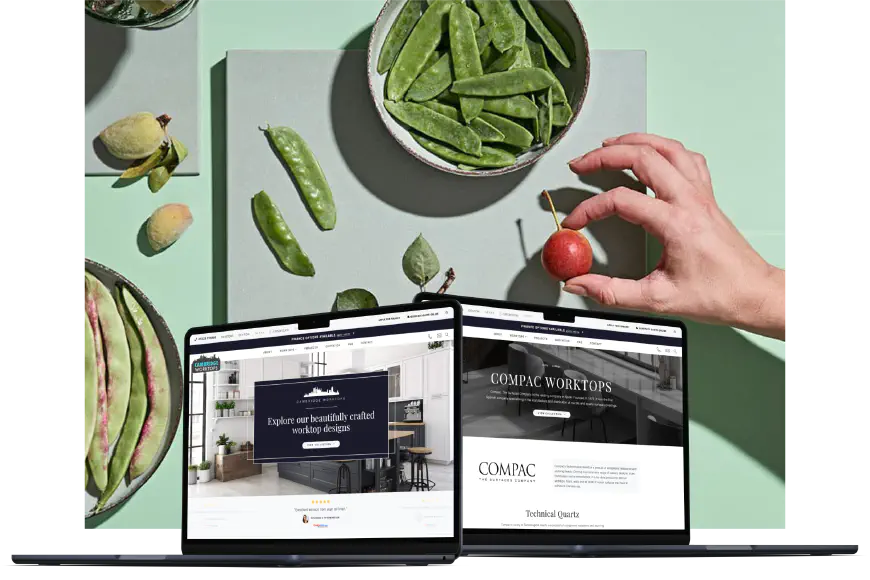Introduction
When the founder of Cambridge Worktops approached us for assistance in growing his kitchen worktop business, he had already worked with a couple of freelancers. Their efforts had resulted in a single-page website and a basic Google Ads campaign. However, the growth targets that the founder had set for the business had not been met, and he needed help to take things to the next level.
The Challenge
To get a better understanding of the business, its products and services, and what had worked (and what hadn’t) in the past, we arranged a few no-strings-attached Zoom calls. We also installed Google Analytics to learn more about how users viewed and interacted with the existing website. This provided real-time access to metrics, including how many users had submitted enquiries or contacted the owner.
Reviewing the metrics with the founder, we identified several key challenges, including the need to create a new, more comprehensive website that showcased the products and services better. We also needed to create several targeted landing pages to improve the chances of converting users sourced from Google Ads. Finally, we had to re-design the existing Google Ads campaign and better target potential customers using various new features available.
The Result
Our work resulted in a significant improvement in the performance of both the website and the Google Ads campaign. To showcase the product and services better, we built a new, more responsive website with over 500 pages, the majority of which were product-related and ranked highly due to their narrow focus. The website contained several contact methods to establish contact with the business, making it easier for users to get in touch.
For the Google Ads campaign, we used a new ‘STAG’ structure or “Single Theme Ad Groups” to better target potential customers. Using fewer keywords in our campaign but leaning on Google’s AI to seek out different keywords that performance just as well. Our Google Ads campaign generated higher quality enquiries, thanks to better targeting and more specific keywords. We used negative keywords to sculpt the traffic and increase the accuracy of the campaigns.
The site’s organic rank increased dramatically, and 20 pages became first-page entries for organic Google search results. Google Page Insights reviewed the new website and rated it 99 (out of 100) as it was fast, easy to read and navigate using all types of devices.
In conclusion, our work helped Cambridge Worktops achieve explosive growth by creating a new website that showcased their product and services. We also used targeted landing pages to improve conversions and re-designed the Google Ads campaign using new features like STAG structure and negative keyword lists to generate higher quality enquiries and better ROI.



